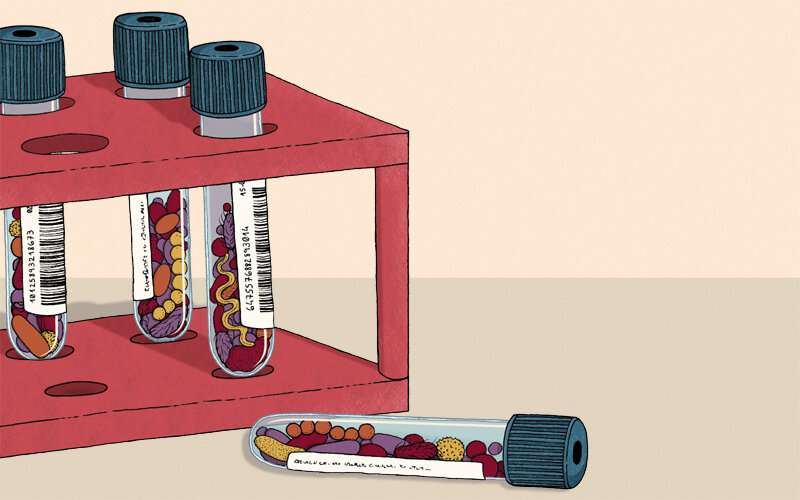Credit: Joana Carvalho, 2020
Antibiotic resistance is a growing challenge in the treatment of infectious diseases worldwide. Bacteria become resistant to antibiotics by acquiring or mutating genes that allow them to survive the administration of antibiotics, which otherwise would kill them. However, this advantage in the presence of antibiotics can imply costs to bacteria when the drugs stop being administered. This occurs because resistance generally affects genes that are essential for the cell and so, once back to the original context, without antibiotics, bacteria stop being fit to compete for its own survival.
Until now, our knowledge about this process comes from studies done in artificial systems that provide an incomplete perspective on the real complexity of this phenomenon. To bridge this gap, a team of researchers led by Isabel Gordo, principal investigator at IGC, used mice as a model organism and identified that in the gut, after the administration of antibiotics, competition for survival shows very different dynamics over time depending on the host where it occurs. The same resistance has different interactions that determine that in one individual a bacterium has low ability to survive in the absence of antibiotics, whereas in another individual that ability is high.
Using the bacteria Escherichia coli, researchers have found that the differences in the cost of carrying resistance for a bacterium are due to the differences in the intestinal flora (or microbiota) of each host. "We have observed that mice without microbiota show no differences in the survival dynamics of resistant bacteria, that always suffer damage and are unable to survive," explains Isabel Gordo. On the contrary, mice with diverse intestinal flora reported a "great variability in the dynamics of survival of resistant bacteria, which are specific of each host, thus establishing a causal relation between individual microbiota and the survival of antibiotic resistant bacteria," says Gordo.
To further understand these results they used a mathematical model that simulates how individual properties of the microbiota can explain different costs of antibiotic resistance in each individual. Besides explaining the effect previously observed in the mouse gut, the model predicts that "over time and as the microbiota stabilizes after the administration of antibiotics, resistance should disappear is all hosts, unless the bacteria compensate for the negative effects caused by the gain of resistance itself. The predictions reveal that even the acquisition of compensation mechanisms depends on the microbiota composition of each individual" clarifies Massimo Amicone, co-author of the study.
These results were later confirmed experimentally in mice, highlighting "the highly personalized features of how survival and maintenance of antibiotic-resistant bacteria can occur in each one of us," say Luís Cardoso and Paulo Durão, also co-authors of the study.
Future steps include "finding the Achilles heel of resistant bacteria in the gut, a research line that we are developing in several angles" explains Isabel Gordo. "At least one of our hypotheses is providing great results: even when colonizing the gut in the least favorable conditions we are being able to eliminate them faster!" reveals Isabel enthusiastically.
More information: Luís Leónidas Cardoso et al, Dysbiosis individualizes the fitness effect of antibiotic resistance in the mammalian gut, Nature Ecology & Evolution (2020). DOI: 10.1038/s41559-020-1235-1
Journal information: Nature Ecology & Evolution
Provided by Instituto Gulbenkian de Ciencia
























